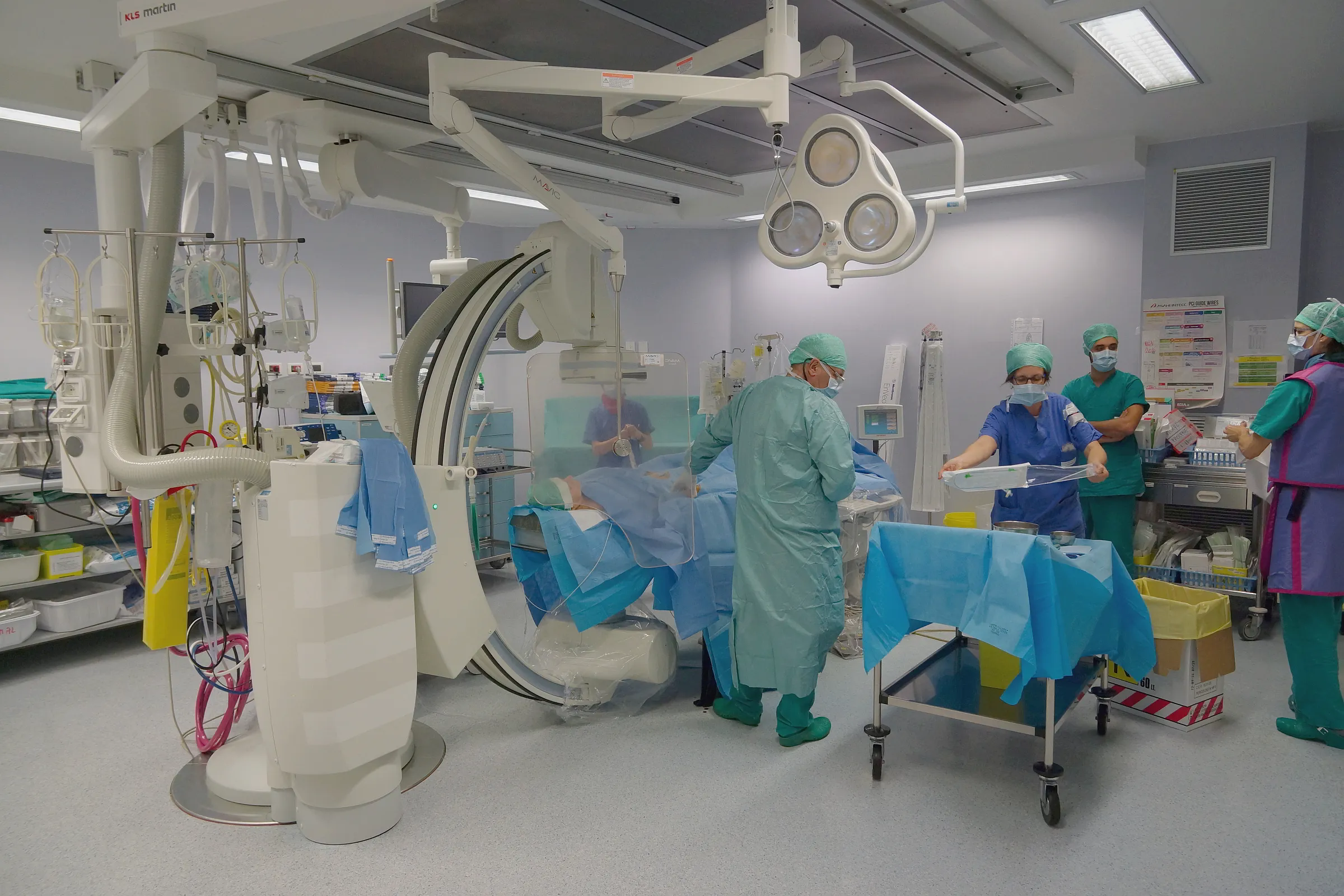This type of radiology provides minimally invasive image-guided diagnosis and treatment of diseases in every organ or system, using the least invasive techniques available. Compared to open surgery, these procedures produce less pain, reduce the risk of infection and have a shorter recovery and hospital stay time.
Interventional radiology requires the introduction of a catheter – a long, thin, flexible tube – into the body, typically into an artery. The catheter combines the use of medical imaging with diagnostic and therapeutic procedures. These procedures are primarily used to unblock blood vessels – either coronary arteries to prevent heart attacks; carotid arteries to prevent cerebrovascular accidents; or renal arteries to cure secondary hypertension.
Other applications are:
- image-guided biopsy, which allows for the collection of solid mass samples without the need of more demanding surgical procedures;
- embolization of cerebral aneurysms to prevent potentially catastrophic intra-cerebral bleedings; and
- drainage of purulent abscesses that may result from surgical interventions.
Interventional radiology is necessarily performed in conjunction with imaging procedures, typically:
- fluoroscopy, which uses differential X-rays absorption from different tissues to produce cine-like images;
- digital subtraction angiography, which uses computer subtraction of background images to enhance arterial blood-flow;
- ultrasound, based on the same principle as fluoroscopy but taking advanced of using differential reflection of sound waves inside the body instead of X-rays;
- computed tomography , which uses X-rays to create cross-sectional images of the body; and
- magnetic resonance imaging , which provides the same results using magnetic fields instead of radiation.
Challenges for the developing world
There remain significant obstacles that must be overcome to safely and practically implement interventional radiology procedures in the developing world. For one, there are financial considerations, not only the capital cost of purchasing a piece of equipment but also the cumulative cost of disposables, such as catheters, wires and special needles.
Too often, budget constraints mean that repairs become very expensive and time-intensive, causing sometimes long service interruptions which in turn result in excessive equipment downtime. Added to this, there is often a lack of proper training of personnel. The careful consideration of resource allocation, training of personnel and selection of procedures is, however, crucial to maintain the safe and sustainable practice of interventional radiology.
One way to help overcome financial constraints is to conduct a careful needs analysis and to use cost-effective tools and technologies. To overcome the practical and ethical limitations of traditional training methods in the underdeveloped world, alternative and durable training schemes involving long-term partnerships with foreign institutions and medical simulation training can be introduced.
Implementation of the most basic and relatively inexpensive radiological equipment has made interventional procedures possible in the underserved world. Commonly performed procedures in developed nations can be modified as a lower-cost technique with minimal changes in efficacy or safety. With the assistance of international humanitarian organizations, careful planning, and innovative techniques, local providers in impoverished nations can have access to the training and equipment necessary to offer life-saving, minimally invasive procedures to underdeveloped countries and make significant medical contributions to the global community.





